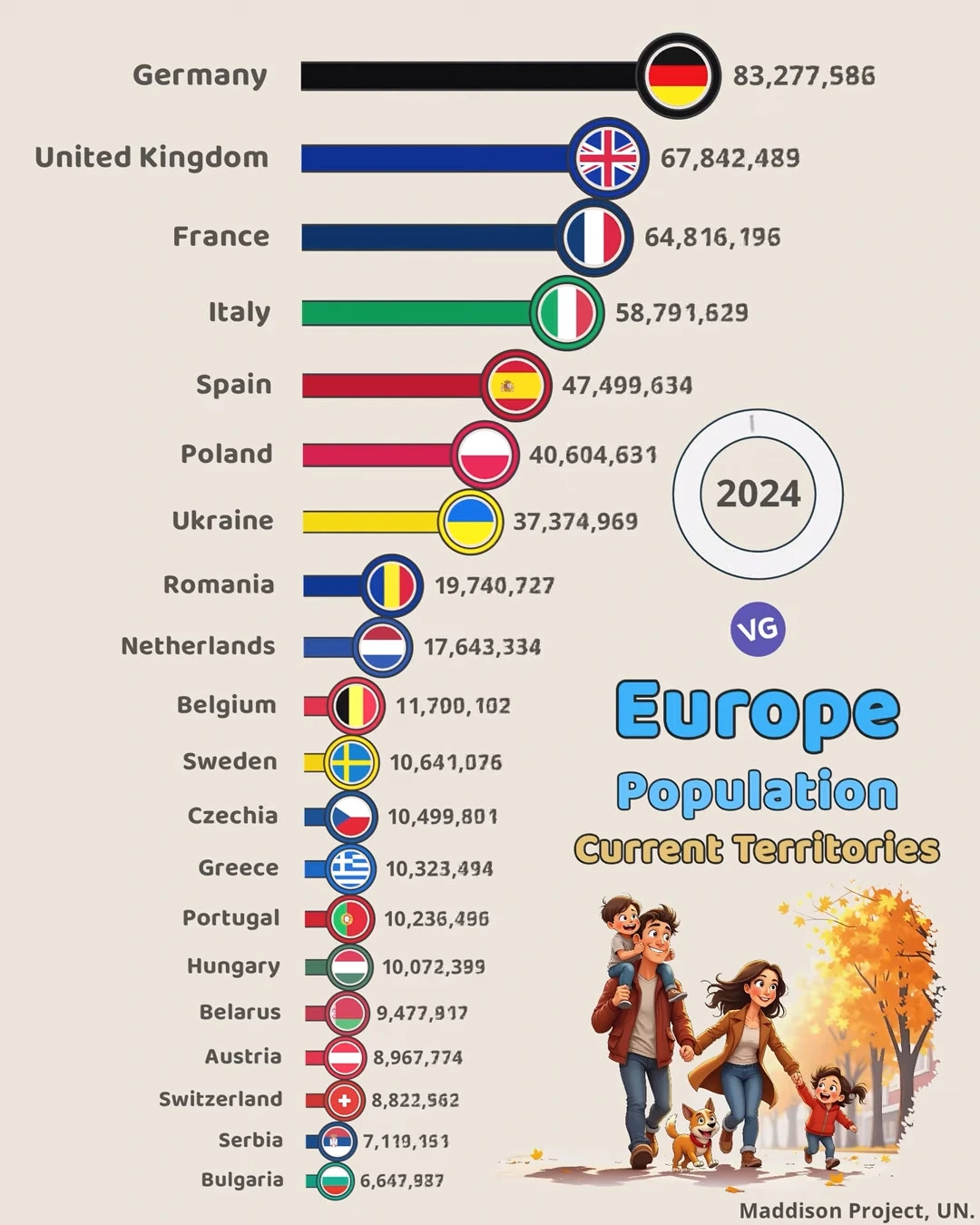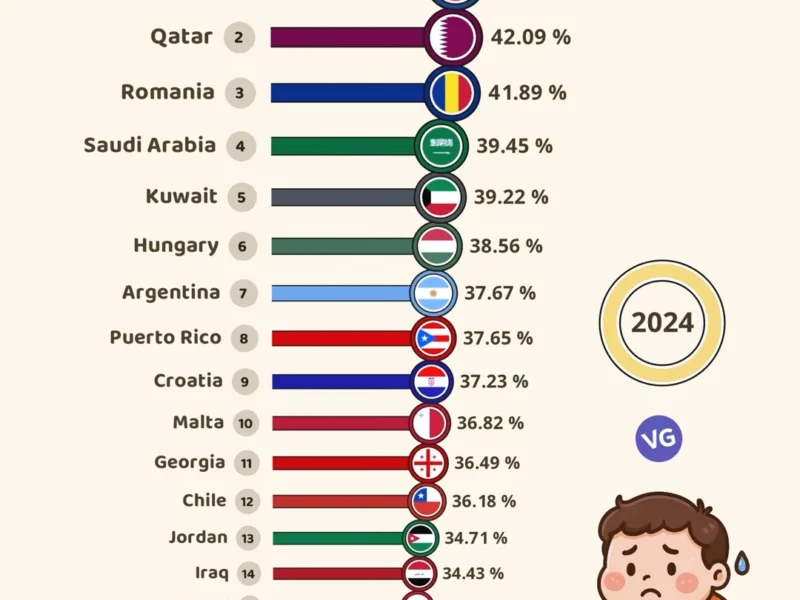The demographic landscape of Europe presents a fascinating study in population distribution across the continent. Recent data from the Maddison Project and the UN reveals significant population variations among European nations, with several key patterns emerging.
Top 20 Most Populous Countries in Europe (2024)
| Rank | Country | Population |
|---|---|---|
| 1 | 🇩🇪 Germany | 83,277,586 |
| 2 | 🇬🇧 United Kingdom | 67,842,489 |
| 3 | 🇫🇷 France | 64,816,196 |
| 4 | 🇮🇹 Italy | 58,791,629 |
| 5 | 🇪🇸 Spain | 47,499,634 |
| 6 | 🇵🇱 Poland | 40,604,631 |
| 7 | 🇺🇦 Ukraine | 37,374,969 |
| 8 | 🇷🇴 Romania | 19,740,727 |
| 9 | 🇳🇱 Netherlands | 17,643,334 |
| 10 | 🇧🇪 Belgium | 11,700,102 |
| 11 | 🇸🇪 Sweden | 10,641,076 |
| 12 | 🇨🇿 Czechia | 10,499,801 |
| 13 | 🇬🇷 Greece | 10,323,494 |
| 14 | 🇵🇹 Portugal | 10,236,496 |
| 15 | 🇭🇺 Hungary | 10,072,399 |
| 16 | 🇧🇾 Belarus | 9,477,917 |
| 17 | 🇦🇹 Austria | 8,967,774 |
| 18 | 🇨🇭 Switzerland | 8,822,562 |
| 19 | 🇷🇸 Serbia | 7,119,153 |
| 20 | 🇧🇬 Bulgaria | 6,647,837 |
The Population Giants
Germany stands as Europe’s most populous nation with an impressive 83,277,586 inhabitants. This demographic strength contributes significantly to Germany’s economic influence within the European Union and globally. Following at a considerable distance is the United Kingdom with 67,842,489 residents, while France completes the top three with 64,816,196 people.
The Mediterranean and Eastern European Powers
Italy and Spain represent substantial Mediterranean populations, housing 58,791,629 and 47,499,634 residents respectively. These nations face unique demographic challenges, including aging populations and varying migration patterns.
Poland emerges as Eastern Europe’s most populous country with 40,604,631 inhabitants, followed by Ukraine with 37,374,969. These figures highlight the significant human capital in Eastern European regions, despite economic challenges some of these nations face.
The Mid-Tier European Nations
Romania (19,740,727) and the Netherlands (17,643,334) represent what might be considered mid-tier European populations. Despite their smaller numbers compared to the continent’s giants, both countries maintain significant economic and cultural influence.
The 10-Million Club
An interesting pattern emerges with several European nations clustering around the 10 million population mark. Belgium (11,700,102), Sweden (10,641,076), Czechia (10,499,801), Greece (10,323,494), Portugal (10,236,496), and Hungary (10,072,399) all fall within this range. This “10-million club” represents nations with sufficient population to support diverse economies while facing fewer challenges managing massive metropolitan areas.
The Smaller European States
Belarus (9,477,917), Austria (8,967,774), Switzerland (8,822,562), Serbia (7,119,351), and Bulgaria (6,647,937) round out the list with populations under 10 million. Despite their smaller populations, countries like Switzerland and Austria maintain high standards of living and significant economic output per capita.
Implications and Future Trends
These population figures have profound implications for economic development, political representation, and resource allocation across Europe. Nations with larger populations typically command greater influence in international bodies but also face more complex infrastructure and service delivery challenges.
Many European countries are experiencing aging populations and declining birth rates, which will reshape this demographic landscape in coming decades. Immigration policies, economic opportunities, and quality of life factors will continue to influence population distribution across the continent.
Conclusion
Understanding Europe’s population distribution provides valuable context for analyzing economic trends, policy decisions, and cultural developments across the continent. While Germany’s demographic dominance is clear, the diverse population patterns across Europe contribute to the region’s rich tapestry of cultures, economies, and political systems.
Source: Maddison Project, United Nations (2024)



